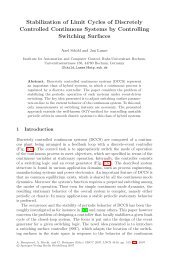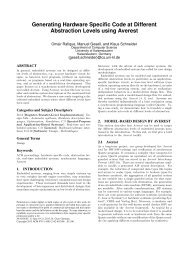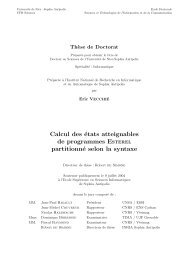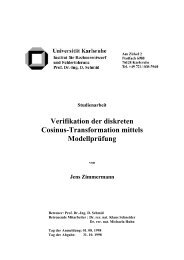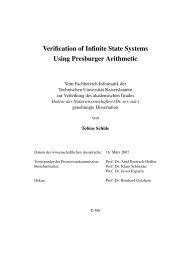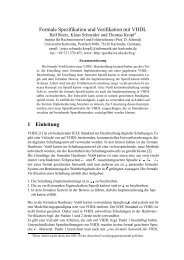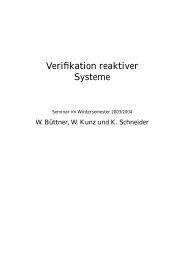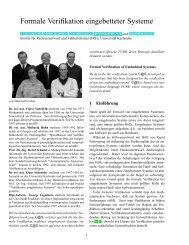Evaluation Environment for AUTOSAR-Autocode in Motor Control ...
Evaluation Environment for AUTOSAR-Autocode in Motor Control ...
Evaluation Environment for AUTOSAR-Autocode in Motor Control ...
Create successful ePaper yourself
Turn your PDF publications into a flip-book with our unique Google optimized e-Paper software.
Chapter 4<br />
Goals<br />
This chapter first describes the background <strong>for</strong> this diploma thesis. Afterwards, it<br />
discusses the idea, why this diploma thesis was arisen and then it addresses the topic<br />
and the requirements.<br />
4.1 Background of the Topic<br />
Chapter 2 gives a short <strong>in</strong>troduction to <strong>AUTOSAR</strong>, a new standard which is becom<strong>in</strong>g<br />
more important <strong>for</strong> automotive software development. On the other hand, there is<br />
a lot of exist<strong>in</strong>g and not <strong>AUTOSAR</strong> compliant software <strong>in</strong> <strong>for</strong>m of the MEDC17<br />
environment, which should not be discarded. But their are two requirements <strong>for</strong><br />
support<strong>in</strong>g <strong>AUTOSAR</strong>:<br />
• suppliers deliver <strong>AUTOSAR</strong> compliant software, which should be <strong>in</strong>tegrated <strong>in</strong><br />
several projects<br />
• a conversion to <strong>AUTOSAR</strong> should be per<strong>for</strong>med step by step<br />
So the first step, which is agreeable with both, is to <strong>in</strong>tegrate <strong>AUTOSAR</strong> compliant<br />
software <strong>in</strong> MEDC17. With this, a new follow–up plat<strong>for</strong>m <strong>for</strong> MEDC17 can be<br />
developed accord<strong>in</strong>g to <strong>AUTOSAR</strong> and the old can be kept <strong>for</strong> current projects. So<br />
the migration to <strong>AUTOSAR</strong> can be done stepwise.<br />
4.1.1 Differences of MEDC17 and <strong>AUTOSAR</strong><br />
<strong>AUTOSAR</strong> and MEDC17 differ <strong>in</strong> a lot of cases. Here are described some po<strong>in</strong>ts,<br />
which cause issues by us<strong>in</strong>g MEDC17 and <strong>AUTOSAR</strong> together. This enumeration is<br />
not complete, because not all are identified yet.<br />
Extended tasks<br />
In section 3.1 the operat<strong>in</strong>g system ERCOSEK is described, on which the BOSCH<br />
architecture MEDC17 is based. It does not support the from OSEK–OS def<strong>in</strong>ed extended<br />
tasks. However, there exist some mechanisms of <strong>AUTOSAR</strong>, which result <strong>in</strong> an<br />
extended task after generat<strong>in</strong>g the RTE. E.g. a runnable can explicitly use a WaitPo<strong>in</strong>t<br />
to wait <strong>for</strong> an RTE event. This causes the usage of an extended task.<br />
29




